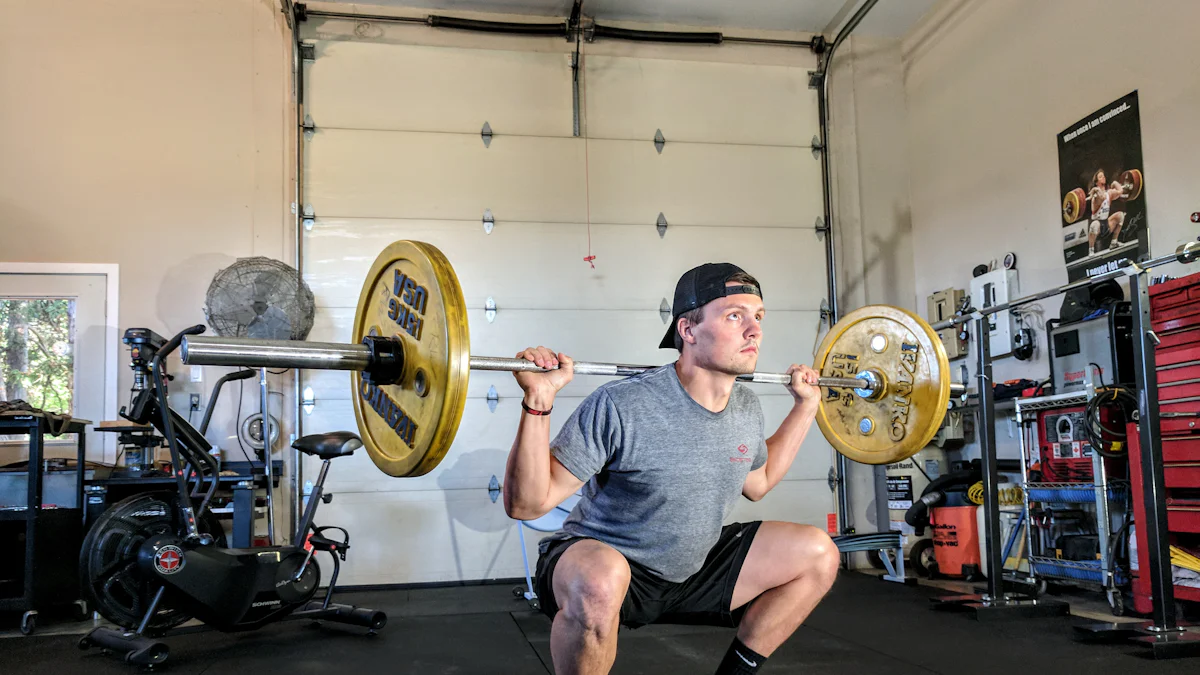
Mastering Progressive Overload for Strength Gains

Progressive overload involves gradually increasing the stress on your muscles. This method leads to muscle growth and strength gains. Researchers found that progressive overload effectively increases bicep strength and muscle mass. You avoid plateaus in training by continuously challenging your body. Progressive overload stimulates rapid gains by increasing the training load over time. This approach enhances overall athleticism and helps you learn how to progressively overload for maximum gains. Various methods, like increasing weight or repetitions, contribute to this process.
Understanding Progressive Overload
Definition and History
Origins of the Concept
The concept of progressive overload dates back to ancient times. Milo of Croton, a Greek wrestler, demonstrated this principle. Milo lifted a young calf daily. As the calf grew, Milo’s strength increased. This story illustrates the core idea of progressive overload.
Evolution in Modern Training
Modern training embraces progressive overload. Trainers use it to enhance muscle growth and strength. The method involves gradually increasing stress on muscles. This approach ensures continuous improvement. Athletes apply this principle to various exercises.
Importance in Strength Training
Benefits for Muscle Growth
Progressive overload plays a crucial role in muscle growth. Muscles need continuous challenges. Increasing weight or repetitions helps muscles grow. This method effectively boosts bicep strength. Both men and women benefit from this approach.
Impact on Endurance and Performance
Endurance improves with progressive overload. Consistent challenges enhance overall performance. Athletes notice better stamina and strength. This method supports long-term fitness goals. Progressive overload remains vital for achieving peak performance.
How to Progressively Overload for Maximum Gains
Increasing Weight
Guidelines for Safe Weight Increase
Increasing weight is a fundamental method in progressive overload. Gradually add more weight to your exercises. This approach stimulates muscle growth and strength gains. Always prioritize safety when increasing weight. Use proper form to prevent injuries. Start with small increments. A 5% increase is a safe starting point. Ensure you can handle the new weight comfortably before progressing further.
Examples of Weight Progression
Weight progression varies for different exercises. For example, start with a 10-pound dumbbell for bicep curls. After mastering the weight, move to a 12-pound dumbbell. Consistent progression leads to significant strength gains over time. Another example involves bench pressing. Begin with a manageable weight. Increase by 5 pounds once you can perform all sets with ease. Gradual increases ensure continued muscle development.
Increasing Repetitions
Benefits of Higher Reps
Higher repetitions offer unique benefits. Increased reps enhance muscle endurance. This approach also promotes muscle growth. Studies show that higher reps contribute to strength gains. Muscle fatigue from more reps stimulates growth. This method suits those aiming for lean muscle mass.
Strategies for Repetition Increase
Start by adding one or two reps to each set. Maintain proper form throughout the exercise. Focus on controlled movements. Gradual increases prevent overexertion. Track your progress to monitor improvements. Adjust reps based on your comfort level. Consistency in this strategy yields noticeable results.
Increasing Sets
Understanding Set Volume
Set volume refers to the total number of sets performed. Increasing set volume enhances training intensity. More sets lead to greater muscle engagement. This approach supports progressive overload. Set volume plays a crucial role in achieving strength gains.
Tips for Adding Sets
Begin by adding one extra set to your routine. Monitor your body’s response to the change. Ensure adequate rest between sets. Rest periods allow muscles to recover. Gradually increase sets as your endurance improves. Keep track of your performance. Adjust the number of sets based on your goals. Consistent practice leads to optimal results.
Increasing Frequency
Increasing workout frequency can significantly boost strength gains. More frequent sessions provide consistent muscle engagement. Regular workouts help muscles adapt and grow stronger. A study from Women’s Health Magazine emphasizes the importance of gradually increasing frequency for effective progressive overload.
Balancing Frequency with Recovery
Balancing workout frequency with recovery is crucial. Muscles need time to repair and grow after each session. Overworking muscles without rest leads to fatigue and potential injury. Plan rest days strategically to allow for muscle recovery. Alternate between muscle groups to avoid overtraining. This balance ensures continuous progress without setbacks.
Scheduling for Optimal Results
Creating a well-structured schedule maximizes results. Consistency in workout timing helps maintain motivation. Schedule workouts at times when energy levels are high. Morning or evening sessions work best for many individuals. Track progress to adjust the schedule as needed. A flexible approach allows for adaptation based on performance and recovery.
Increasing Intensity
Increasing intensity challenges muscles in new ways. Higher intensity workouts push muscles beyond their comfort zone. This method stimulates growth and enhances strength. The Built With Science study highlights intensity as a key component of progressive overload.
Techniques for Intensity Boost
Several techniques effectively increase workout intensity. Decrease rest time between sets to maintain muscle engagement. Incorporate high-intensity interval training (HIIT) for cardiovascular and strength benefits. Use supersets by performing two exercises back-to-back without rest. These methods keep muscles under constant tension, promoting growth.
Monitoring Intensity Levels
Monitoring intensity levels ensures safe and effective workouts. Pay attention to how muscles feel during and after exercise. Signs of excessive fatigue indicate the need for adjustments. Use a perceived exertion scale to gauge workout intensity. Aim for a challenging yet manageable level. Regular assessment helps maintain optimal intensity for progressive overload.
Practical Tips for Progressive Overload
Tracking Progress
Using Logs and Journals
Tracking progress helps you understand how to progressively overload for maximum gains. Use logs or journals to record workouts. Write down weights, sets, and repetitions. This practice allows you to see improvements over time. Consistent tracking reveals patterns in your training. Identify areas needing adjustments for better results.
Analyzing Performance Data
Analyzing performance data provides insights into your strength journey. Review your logs regularly. Look for trends in weight increases or repetition growth. Data analysis helps you set realistic goals. Adjust your training plan based on findings. Understanding your progress ensures continuous improvement.
Avoiding Common Mistakes
Overtraining Risks
Overtraining poses a risk to your health and progress. Pushing too hard leads to fatigue and injury. Recognize signs of overtraining like persistent soreness or lack of motivation. Balance workouts with adequate rest. Listen to your body to avoid setbacks.
Importance of Rest and Recovery
Rest and recovery play vital roles in strength gains. Muscles need time to repair after workouts. Schedule regular rest days in your routine. Quality sleep supports muscle recovery. Proper nutrition aids in rebuilding muscle tissue. Emphasize recovery to maximize training benefits.
Progressive overload offers numerous benefits for strength and muscle growth. This method ensures continuous improvement by gradually increasing challenges. You can incorporate techniques like adding weight, reps, or sets into your routine. Consistent application leads to significant gains. Start small and track progress to see improvements over time. Embrace the journey of mastering progressive overload. Your dedication will result in enhanced strength and athleticism. Begin applying these techniques today to achieve your fitness goals.


